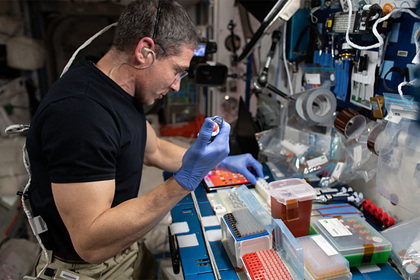
Microbes found on the International Space Station (ISS) were first identified by scientists. A related scientific study was published in the journal Frontiers in Microbiology.
Four strains of bacteria unknown to science were found in different places on the ISS. The microorganisms were found in the top panel of the research station, in the dome, on the surface of the dining table and in an old HEPA filter that was sent to Earth in 2011. Experts said that three of the four strains were isolated back in 2015-2016. New bacteria have been discovered by scientists from the United States and India working with the ISS on Earth.
All four strains belong to the family of bacteria found in soil and fresh water. Biologists noted that these bacteria cannot harm a person, on the contrary, they are useful for breeding flora. It is specified that microorganisms are involved in nitrogen fixation and can fight against plant pathogens.
The scientists report that only one of the strains – found in the HEPA filter – has been identified as Methylorubrum rhodesianum. The remaining three strains were sequenced and assigned to a new species, the bacteria were named IF7SW-B2T, IIF1SW-B5, and IIF4SW-B5. Genetics from the University of Southern California, working on the study of bacteria, proposed to name the new species Methylobacterium ajmalii – in honor of the famous Indian scientist Ajmal Khan.
In conclusion, the experts noted that the appearance of bacteria associated with vegetation is not surprising, since various types of vegetables are grown on the ISS, for example, tomatoes and lettuce. Also, geneticists said they hope for new discoveries, since the astronauts have collected about a thousand samples at the station, which are awaiting sending to Earth.
NASA and other space agencies have been monitoring the microbial environment of the ISS for a long time. In particular, in the fall of 2015, specialists discovered bacteria and fungi at the station, including microorganisms potentially dangerous to the life of astronauts.

